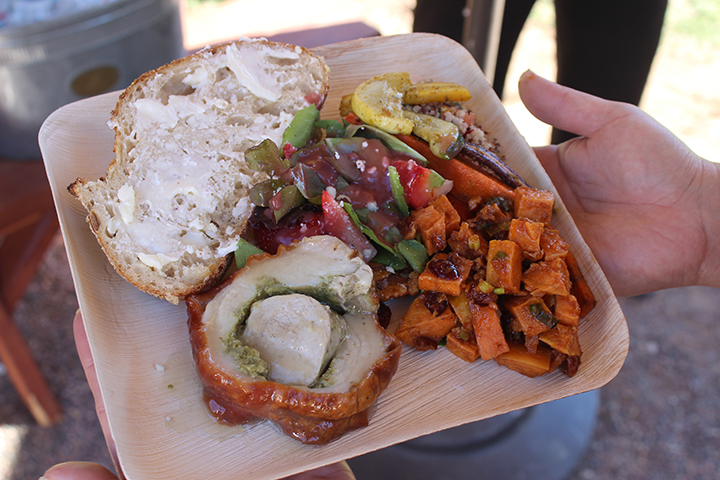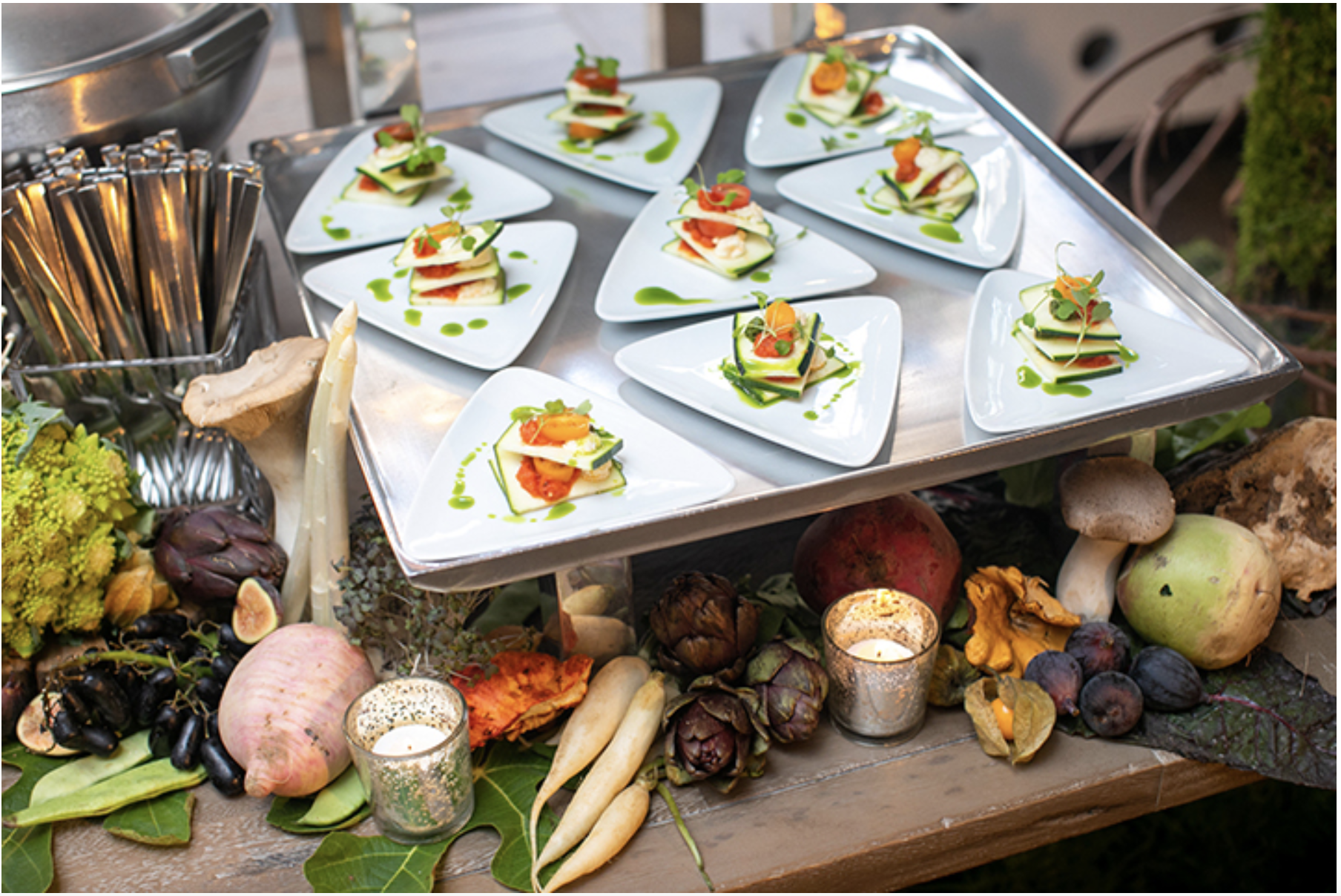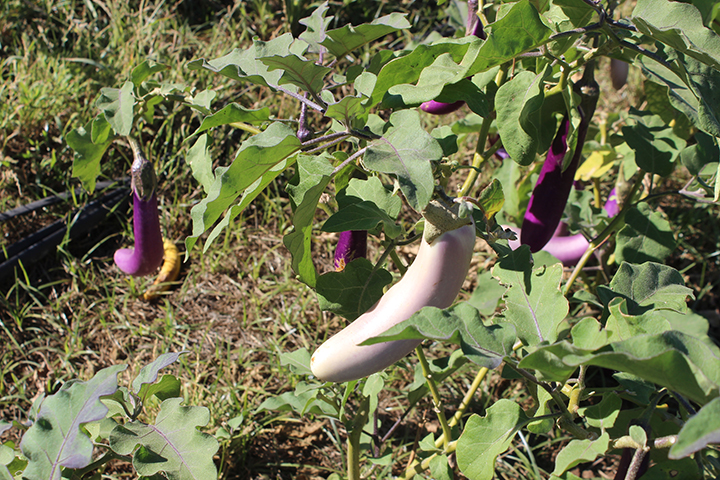With birds chirping and nature slowly waking up after months of hibernation, spring traditionally signals the beginning of a new events season: weddings, graduations, outdoor festivals and so much more. But not this year. As COVID-19 continues to inflict limitations on large gatherings, many people in the hospitality industry are struggling to keep themselves and their businesses busy. With so much extra time nowadays, it’s the perfect chance to start thinking about fresh ideas to bring into your business once the industry starts to resemble some sort of normalcy; one trend that will continue to grow in popularity, and maybe even more so after the pandemic, is farm-to-table.
“People have more time, so they are more focused on fresh fruits and veggies in a different way,” said Pat Christofolo, owner of Artisan by Santa Barbara Catering.
From the Farm to the Table
The concept of farm-to-table menus are nothing new, but it’s become so much more than fad. It’s here to stay.
“People are looking for that connection to the land,” said Christofolo who not only offers farm-to-table catering menus, but also grows her own ingredients at The Farm of South Mountain. “They prefer to eat healthy, have organic, especially as we get further along in this epidemic.”

A farm-to-table meal from Pat Christofolo's The Farm at South Mountain. Photo courtesy Kathleen Stoehr.
But what’s behind this growing trend?
The popularity of farm-to-table is primarily being driven by consumers who are becoming more health-aware, but it’s so much more than just looking for the low calorie or fat-free options. It’s also a desire to know what’s in the foods they eat and where those foods come from. It’s the desire for greater quality with a focus on whole foods and short ingredient lists.
“It’s about tapping into a part of our heritage, our history,” said Mark Lopez, owner of Crave Catering, which operates its own farm. Lopez, along with Steve DeAngelo from DeAngelos Catering and Events, presented a session during the Catersource Conference & Tradeshow on “Growing Your Own! From Herb Gardens to Small Acreage Farms.”
“It’s about wanting to create dishes with the utmost flavor, and you can’t get better that freshly picked, warm tomatoes off the vine.”

The Farm at South Mountain features about an acre of farm field, a green house, three restaurants, and an event venue. Photo courtesy Pat Christofolo.
The farm-to-table movement has also given rise to plant-based dishes.
Plant-based food speaks solidly to the trend in overall consumer health improvement goals, as well as sustainability. While being on a plant-based diet has been shown to help people lose weight, that's not the only reason some people choose to go that route. Some people refrain from eating meat due to ethical reasons because they believe eating animals is morally wrong. Other people decide to lead a plant-based lifestyle to reduce their carbon footprint and greenhouse gas emissions.

Mini Heirloom Tomato Zucchini Lasagna with Sun-dried Marinara & Macadamia Ricotta. COPYRIGHT PHILLIPVN 2018.
One example of how plant-based food is impacting catering can be seen in Marcia Selden Catering’s new business venture with Chef Matthew Kenney, Naked Fig Catering. The company’s entirely unapologetic plant-based menu includes items such as Harissa and Maple Rainbow Carrots with Maple Fluff and Pistachio Dust; King Oyster Bao with Cashew Hoisin and Pickled Cucumbers; and Avocado Tikka “Taco” with Curry Leaf Yogurt, Candy Cane beets, and Affilla Cress Micro.
Join Catersource on June 26 for the Rebuild & Rise Webinar "Can Buffets Survive COVID?" Learn more and register by clicking here.
But before you start incorporating farm-to-table or plant-based options into your menu, you must first consider your ingredients.
Growing Your Business
Christofolo encourages those who haven’t previously grown their own produce to keep it small to start with, whether that means a small backyard garden, or even herb planters.
“I do think small is better,” she said. “Farming is not an easy task, so you want to create something that is manageable and that you can handle.”

Pat Christofolo's Artisan by Santa Barbara Catering in Phoenix specialized in farm-to-table menus through a partnership with The Farm at South Mountain. Photo courtesy Kathleen Stoehr.
When thinking about what types of products you want to have on your property, consider not only what you have access to, but what you can also successfully maintain for a considerable part of the year. If you live in a colder weather climate, fresh fruits may not be the route, but perhaps you can look at hardier root vegetables or greens.
“You want to plant products that are going to be accessible to you,” Christofolo said, ”and then you can plan your menu accordingly.”
Christofolo’s 10-acre property has about an acre of farm field, as well as a greenhouse. Christofolo’s farm fresh menus include everything from pizza to pasta to pie. Some of her most popular freshly grown ingredients include kale, tomatoes, carrots, micro greens, artichokes, and beets.

The Farm at South Mountain grows everything from eggplant to kale to tomatoes to peppers to carrots to beets. Photo courtesy Kathleen Stoehr.
Growing your own can also lead to a small side business venture as well. If you are able to harvest more produce than you need, you can look into offering community supported agriculture memberships, or canning and selling at farmer’s markets.
Another option to think about is expanding your products beyond fresh fruits and vegetables. Maybe you are interested in harvesting your own honey, or you could think about having farm fresh eggs in a backyard coop. Or if you have a large enough property, maybe you could look at getting a few dairy goats to make your own cheese. The possibilities really are endless, as long as you have the space, time and dedication.
But don’t forget about your local farmers and growers either though, Christofolo said, because many of them are struggling as well.
“They need your orders so that they can continue doing what they do best,” she said.
Gardening during a Pandemic
While getting out into the garden is a great way to stay busy regardless, there’s definitely something to be said for having an activity to do while social distancing, and self-isolating has become the norm. Take the free time that you have now to read up on how to grow your own produce, start brainstorming menu ideas for how you want to use your produce and, of course, spend time outdoors planting, weeding and giving back to nature.
“There’s an appreciation for connecting with our food,” Christofolo said.

A worker in the field at the Farm at South Mountain. Photo courtesy Kathleen Stoehr.
An added bonus? Depending on how large your farm or field is, there is an opportunity to bring back some furloughed employees to help out, while still adhering to social distancing regulations.
“When there’s no hours in the kitchen,” Lopez said during his Catersource session, “you can shift some labor over to the farm.”
Farm-to-table and plant-based meals will continue to grow in popularity post-pandemic, Christofolo said, because there’s going to be a renewed appreciation for food that has a very small trip to get to their plate.
“They don’t want a ton of people touching their food before they get it,” she said, “so they love to hear that you grew something because it means fewer people interacted with it.”



